Portable Antenna Mast
10 July 2020
To hang my antenna for amateur radio, I had originally thrown a rope over a tree limb to create a pulley to raise the antenna. This method is very cheap, quick, and works wherever there is a tree. However, I wanted an option that works when there is nothing to create a pulley. Doing some research led me to telescoping fiber-glass poles. These are lightweight, compact, and strong enough to last several years. However, they are not the cheapest option. Enter PVC pipe.
My idea was to put a few pieces inside each other with ropes to act as pulleys for each section. A side view of a 2-section mast works like this:
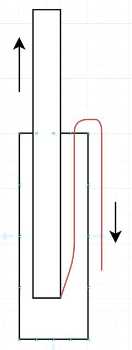
There is also a line connecting the tops of the sections to prevent the top section from coming out when someone keeps pulling on the hoist-line.
With this design, I got 5ft sections of 1/2", 1", 1.5", and 2" schedule 40 pipe. These sections fit together with enough room to allow the lines in between, but also allow the mast to bend at each joint. This will be addressed later.
I got some rope and duct tape and prototyped the mechanism on the floor. I learned that the sections must be raised bottom-to-top, and must be lowered top-to-bottom. With this working, I got a drill and started making holes and securing lines. I also added a hook to tie off the hoist lines since they are holding the weight of the mast. Since this hook goes inside the bottom section, it acts as a rest for the second section and helps hold the weight.
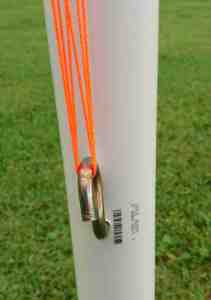
To address the bendy-joint issue, I wrapped the bottom of the pipe with some rope, making 2 layers to take up space. The hoist line were put under this to help keep everything neat.
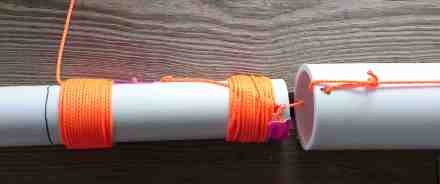
After the main mechanism was worked out, I needed to make a system to hold the mast vertically. My first thought was a long spike/rod driven into the ground, but this would add a lot of weight to the system and probably require a shovel to set up. I instead went with 3 guy-wires. This only requires 3 stakes and some lengths of rope. I also got a long nail, advertised for installing house gutters, to keep the base from slipping. This spike sticks out the bottom of the mast and into the ground a few inches.
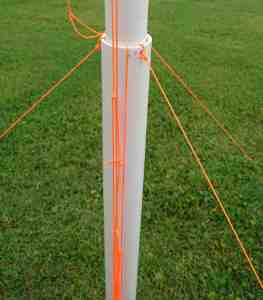
With all the ropes tied off, I could start to set up the mast. It took me about an hour of trial and error to get everything set up just right and the mast raised, but subsequent installations take significantly less time since I don't have to adjust as many things.
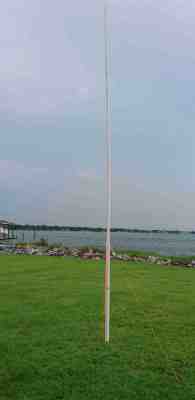
The PVC cost me about $15. The gutter spike things were $10 for a pack of 10 and the stakes were about $5. I already had a spool of rope. If you have no supplies to start with, this would cost around $40, but you would have hardware left over. In bulk, each mast would cost about $20.